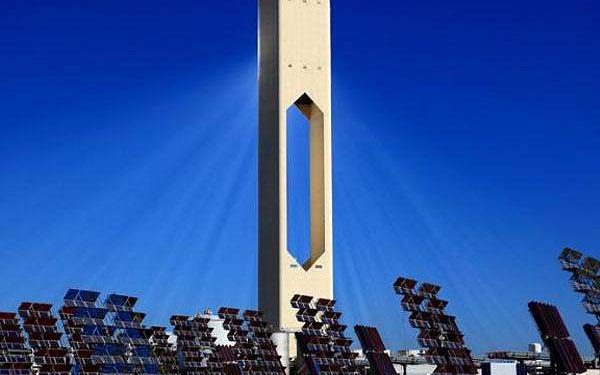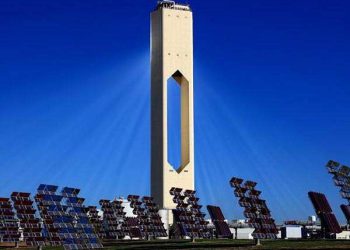Ultrablack nanoneedles achieve new benchmarks for solar tower light absorption
by Erica Marchand
Paris, France (SPX) Nov 04, 2025
Concentrated solar power is gaining traction as a future renewable energy source due to its efficient thermal energy storage. Historically more costly and complex than photovoltaic systems, advances have made concentrated solar increasingly viable and adopted for sustainable energy production.
Inigo Gonzalez de Arrieta of the Thermophysical Properties of Materials group at the University of the Basque Country (EHU) described their work on ultrablack materials for tower applications. “We are exploring ultrablack materials for use in solar towers.” In these plants, mirrors focus sunlight onto an absorber tower.
“The more we can achieve absorbing materials that are more effective, the more competitive the systems will be, and we will be opening up opportunities for this type of energy,” Gonzalez de Arrieta stated. EHU uses state-of-the-art equipment for thermo-optical analysis of samples, with few labs globally equipped for such high-temperature research.
The team characterized copper cobaltate nanoneedles, patented by UC San Diego, and found marked improvements over prior absorber technologies. “We saw that these copper cobaltate nanoneedles performed better than the carbon nanotubes used until now, and that these nanoneedles performed even better when coated with zinc oxide,” reported Gonzalez de Arrieta.
Solar tower designs strive for maximum light absorption leveraging ultra-black materials. Vertically aligned carbon nanotubes, the blackest available, feature strong light-trapping capacity but lack stability at high temperatures and humidity, requiring extra coatings that reduce efficiency. “Carbon nanotubes absorb about 99% of the light, but they cannot be used on solar towers.” In contrast, copper cobaltate nanoneedles – especially zinc oxide-coated – showed improved thermal stability and absorption reaching 99.5%. Current standard black silicon absorbs about 95%.
Dr Renkun Chen (UC San Diego) and collaborators at the US Department of Energy aim to deploy zinc oxide-coated copper cobaltate nanoneedles in solar towers, though development faces regulatory and technical challenges.
Solar tower facilities run in areas such as Andalusia and desert regions worldwide. Concentrated solar plants supply about 5% of Spain’s energy, providing clean generation and effective thermal storage. The heat is used to melt special salts, with molten salt retentive for efficient power grid delivery even after sunset.
EHU continues to develop new coatings to further advance optical and conductive properties for next-generation solar tower absorbers.
Research Report:AZO-coated refractory nanoneedles as ultra-black wide-angle solar absorbers
Related Links
University of the Basque Country
All About Solar Energy at SolarDaily.com















